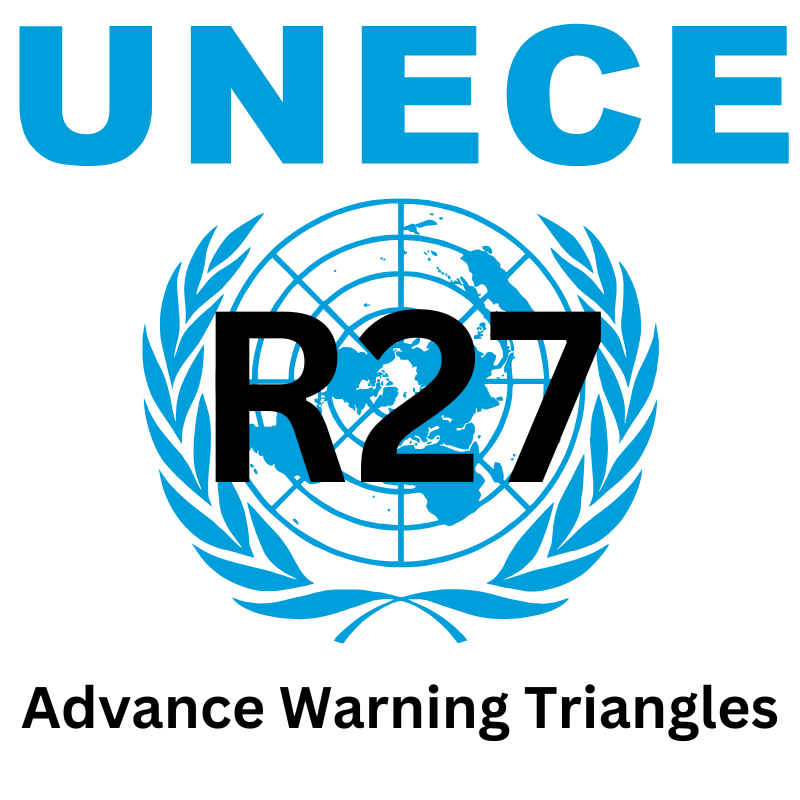Guide To: UNECE R27 - Advance warning triangles
23 July 2023

Guide To: UNECE R27 - Advance warning triangles
UNECE Regulation No. 27 was established to define the technical standards for advance warning triangles. These are essential safety devices placed on the road to warn oncoming traffic of a stationary or disabled vehicle, particularly in emergency situations. Effective during both day and night, the regulation ensures that these devices meet specific performance standards, ensuring they contribute to road safety.
Overview of UNECE Regulation No. 27
Regulation No. 27 covers the design, performance, and approval of advance warning triangles used on all types of vehicles, including power-driven vehicles and their trailers. It sets the framework for the uniform technical standards required to make these devices visible and effective in all lighting conditions.
Key areas covered by this regulation include:
- Photometric Requirements: These requirements ensure that the triangle reflects enough light to be visible from a distance in low-light conditions, such as at night or during inclement weather.
- Colour and Material Specifications: Advance warning triangles must include retro-reflective and fluorescent materials to ensure high visibility. The colour of the material is strictly controlled to avoid confusion with other road signals.
- Durability Tests: The triangles must be resistant to environmental conditions, such as heat, water, and fuel exposure, ensuring their effectiveness even in harsh weather conditions.
- Stability and Mechanical Solidity: The regulation specifies that the triangle should be able to remain stable and upright under windy conditions to maintain its warning function effectively.
Key Tests and Procedures
The regulation details specific tests that must be carried out to ensure that the advance warning triangle performs reliably. These tests include:
- Heat and Cold Resistance: The device must endure extreme temperatures without cracking or deforming.
- Water and Fuel Resistance: The triangle must remain functional and intact after exposure to water and automotive fuels.
- Wind Stability: The device must be able to withstand wind gusts of specified strength without being dislodged from its position.
As part of UNECE's initiative to streamline and consolidate vehicle safety standards, the provisions of Regulation No. 27 have been incorporated into UNECE Regulation No. 150, which now governs retro-reflective devices and markings for vehicles. This includes advance warning triangles, which are critical for roadside safety.
The incorporation of Regulation No. 27 into Regulation No. 150 reflects UNECE’s effort to unify and simplify the regulatory framework governing these safety devices, allowing for a more straightforward compliance process for manufacturers. Under Regulation No. 150, the provisions related to photometric, colorimetric, and durability standards for advance warning triangles remain intact, ensuring continued focus on road safety.
Conclusion
By integrating the requirements of Regulation No. 27 into the broader Regulation No. 150, UNECE has ensured that the key safety features of advance warning triangles continue to meet modern road safety needs while simplifying the regulatory landscape. These devices remain a vital part of roadside safety, helping to prevent accidents and ensuring that vehicles stranded on the road are adequately marked, visible, and compliant with international standards. For manufacturers and suppliers of these products, adhering to UNECE R150 ensures they meet the highest standards for vehicle safety equipment.